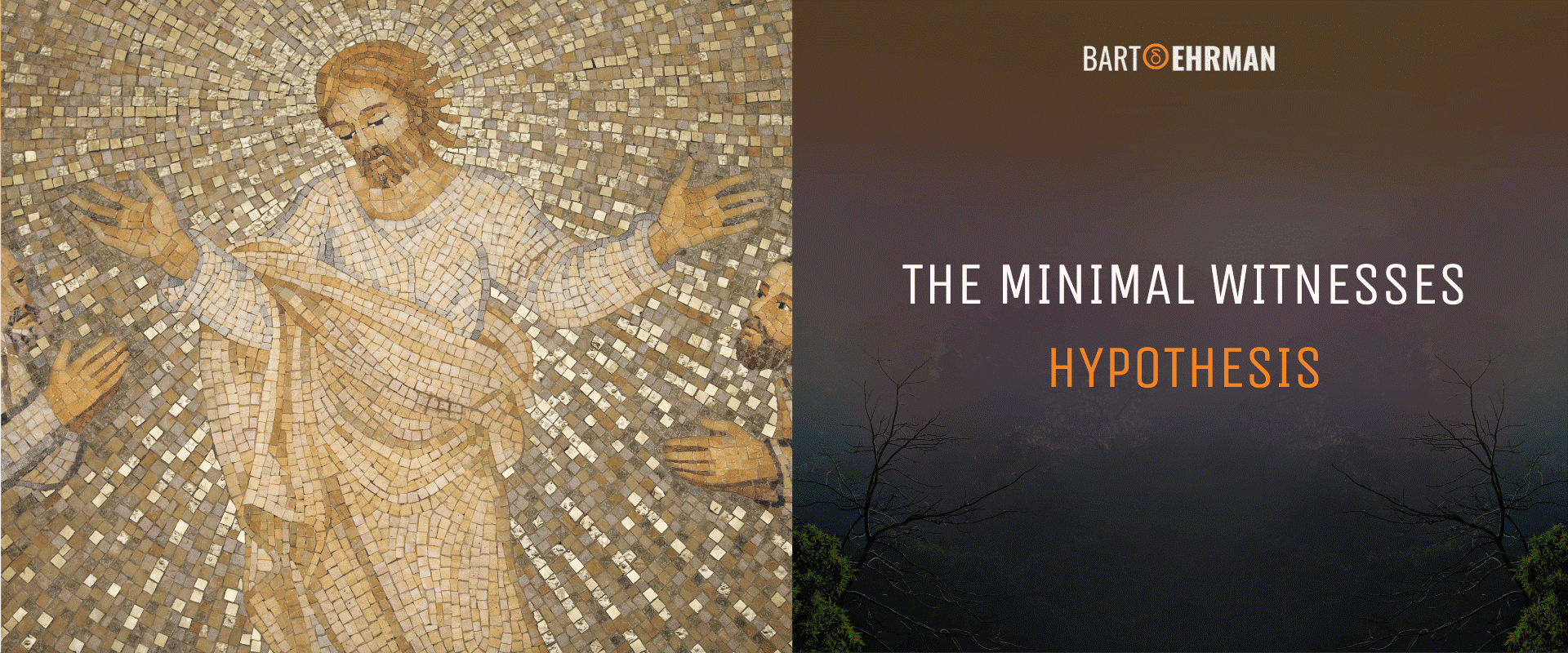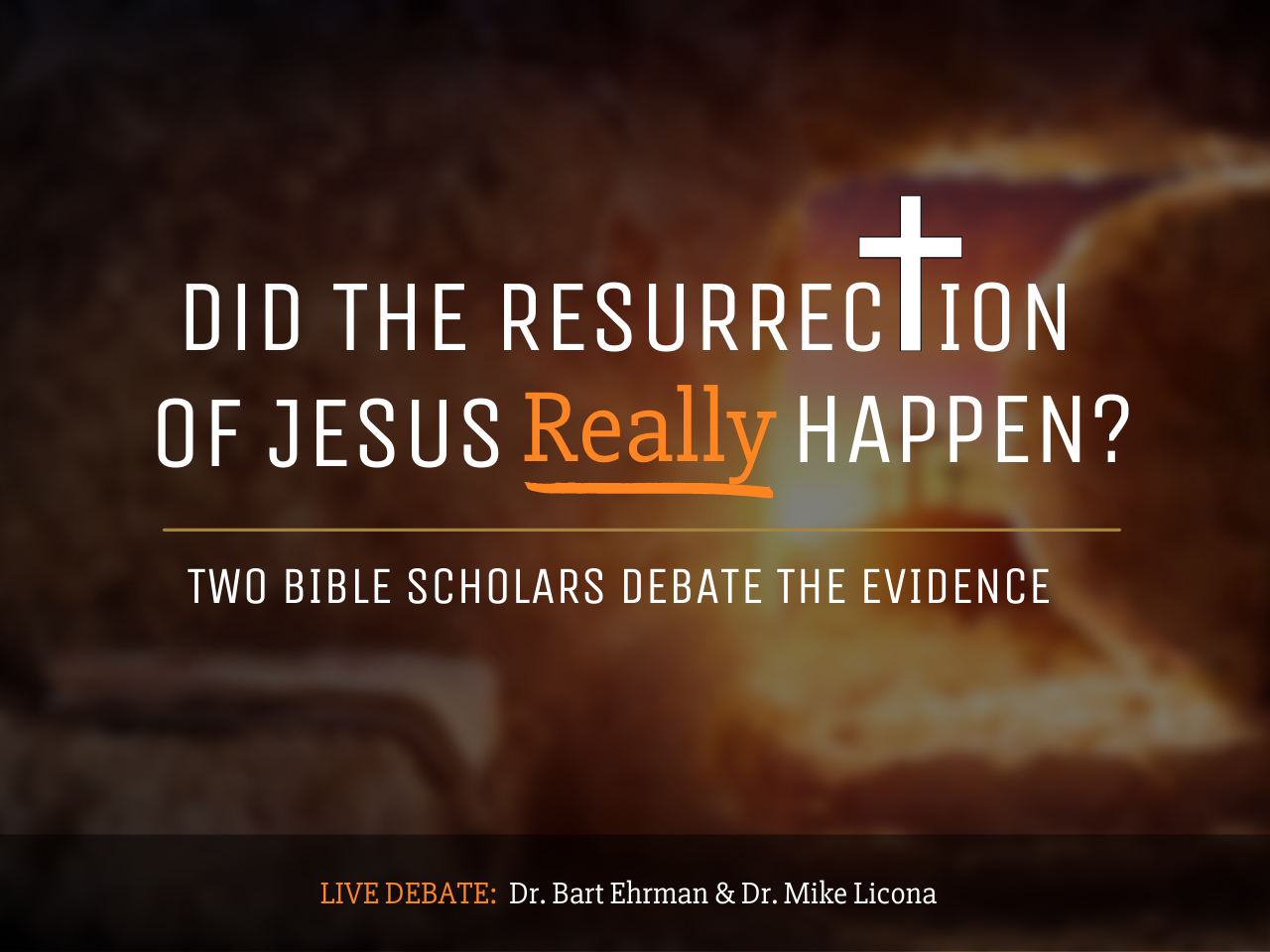The “Minimal Witnesses” Naturalistic Hypothesis

Written by Paul Ens
Creator of the Paulogia YouTube Channel
Verified! See our editorial guidelines
Disclaimer: The views and opinions expressed in this article belong to the author and do not necessarily match my own. - Dr. Bart D. Ehrman
Unbelievers are retreating! Or so says resurrection expert, Dr Gary Habermas.
Toward the end of the recently-released, thousand-page first volume of his resurrection evidence tome, Habermas contends that there is a lack of scholars who are willing to embrace and defend a single naturalistic hypothesis to explain early belief in the resurrection of Jesus, “preferring a general ‘shotgun’ approach that basically presents several alternatives where the critic can switch back and forth between the options if one or two become problematic in the aftermath of the ensuing discussion.” [1] Few skeptical champions are standing up “apparently due to the strength of the contrary data.” [2]

But it may not behoove prominent academics to focus on promoting specific pet theories in lieu of prioritizing the broader, more foundational principles of their field. As Dr Ehrman notes, “any other scenario—no matter how unlikely—is more likely than the one in which a great miracle occurred.” [3]
That said, when I found my personal evangelical faith slipping away, a respected Christian mentor challenged me to answer one final question before closing the door. “The thing we know for certain is that Christianity exists,” he said. “Can you explain the existence of the church without a resurrection?”
Though it took years of investigation and study, it turns out I can.
Although the scholarly defense of each point could easily fill a full chapter in a book, the “Minimal Witnesses” hypothesis can be succinctly expressed as descriptions of twelve [4] relatively uncontroversial naturalistic events that, in turn, gave rise to the Jesus Movement, which eventually evolved into modern Christianity.
1. In the early first century, among the apocalyptic preachers active in Judea was one Jesus of Nazareth.
For the sake of this discussion, we’re assuming Jesus was a historical figure. [5]
The Dead Sea Scrolls, along with Josephus and Philo of Alexandria, and the wealth of apocalyptic literature like 1 Enoch, 4 Ezra, 2 Baruch, Jubilees and Daniel, tell us that Jewish apocalypticism and apocalyptic preachers, such as John the Baptist, Judas of Galilee and Theudas, were not uncommon in first-century Judea.
For over a hundred years [6], scholarship has held that historical Jesus is best understood as an apocalyptic preacher. His earliest and most reliably attested sayings consistently align with apocalyptic themes [7], including the imminent arrival of God’s kingdom, the call to repentance, and the anticipation of an eschatological reversal in which the righteous are rewarded and the wicked are punished.
2. This Jesus said or did controversial things which led to his crucifixion on a cross, a common practice at the time.
While the infraction could have been anything, actions ascribed to Jesus – such as disturbing the peace in the Temple or challenging Roman authority by claiming to be the Messiah or “King of the Jews” – would have been sufficient to warrant the death penalty under Roman rule.
Medical research [8] and historical record [9] tell us death was all-but certain for crucifixion victims.
3. The resting place of Jesus’ body was unknown to his followers.
Apologists often focus on the timing of Jesus’ body’s removal, but the crucial question is who disposed of it.
If the Romans were responsible, the body would have been left on the cross, possibly to be eaten by animals, as this humiliation was considered part of the punishment. [10]
If a Judean religious exemption existed (despite explicit records to the contrary regarding Jesus’ case of treason [11]), the responsibility would have fallen to the family to successfully petition those in power. Mary, being of modest means and lacking influence, would have faced significant obstacles in securing the body and transporting it from Jerusalem to Nazareth for a simple pit grave. [12]
In the absence of family, the priesthood would have taken charge. However, Jewish law mandated that criminals be left in separate, designated Graveyards of the Condemned in a dishonorable and secretive manner. [13]
In the expected scenarios, the location of Jesus’ body remains unknown. For it to be otherwise would require the same authorities who condemned Jesus to honor him mere hours later—a notion nearly as implausible as a resurrection.
4. This Jesus had some followers while he was alive, but most disappeared into lives never recorded by reliable history, never to be heard from again… all except Simon Peter and possibly John.
Despite self-serving and often fanciful church traditions arising centuries later, only Peter and John of “The Twelve” are regularly mentioned in events after Jesus’ ascension [14]. In his comprehensive study [15], Sean McDowell acknowledges that Peter is the sole member of “The Twelve” for whom there is high confidence of martyrdom.
5. Distraught after the death of his mentor, Simon Peter became sincerely, albeit mistakenly, convinced that Jesus had appeared to him.
While potential causes are innumerable, a post-bereavement hallucinatory experience (PBHE), involving sensory perceptions of a deceased loved one, is a likely cause of Peter’s mistaken belief. Estimated to affect 30-60% of bereaved individuals during their grieving process [16], PBHEs can manifest through various sensory modalities, including visual, auditory, tactile, olfactory, and gustatory sensations, and may present as dreams, vivid memories, or hallucinations. PBHEs are common among grieving individuals, and do not necessarily indicate mental illness.
6. James the brother of Jesus became part of Peter’s Jesus Movement. Perhaps also one of the disciples named John.
In Galatians, Paul describes meeting James, Peter and John in Jerusalem, so we know they were all involved in the church. We don’t know what any of these men believed about resurrected Jesus, nor what their motivations might have been for joining the movement, since they left no first-hand accounts telling us. [17]
Assuming they came to believe in Jesus’ resurrection, that could be explained by “social contagion”: a model of influence and persuasion. Peter’s claim of witnessing the risen Jesus gave the shocked and grieving group hope, which they readily accepted due to bias, predisposition, and the power of Jesus’ message. Peter’s influence, group dynamics, and cultural factors convinced them of the resurrection through faith… just like every Christian believer since.
Or maybe James just took over the family business. The possibilities are endless.
7. Stories about Jesus spread through person-to-person evangelism, with the focus on recruiting new followers rather than accurately transmitting historical events.
Details were embellished or invented to eliminate obstacles to belief, and the narratives most successful at winning converts were repeated. As the movement grew, Peter was not personally present to confirm or correct the adopted narratives.
The Jesus Movement grew for many decades before the first gospels were written, so scholars generally agree that it spread primarily through personal evangelism and word-of-mouth, rather than through written texts or formal institutions.

8. Paul (Saul), a Pharisee who had been persecuting the new Christians out of a sincere belief that he was serving God, experienced a non-veridical vision of the allegedly-resurrected Jesus.
Profoundly affected by this experience, Paul became a believer and began recruiting for Christianity and writing letters outlining his theology.
Per his own letters, Paul had multiple visionary experiences throughout his life [18], which significantly influenced his ministry and teachings. He was prone to them.
His persecution of Christians may well have caused him profound guilt and cognitive dissonance. This psychological distress, possibly resembling post-traumatic stress disorder (PTSD), could have triggered a psychotic break, manifesting as a vision of the resurrected Jesus. Paul’s subsequent conversion to Christianity may have served as a coping mechanism to resolve his inner turmoil, alleviate guilt, and find a new purpose in life.
9. Paul met Peter (and John), but they didn’t see eye-to-eye.
Paul went to Jerusalem to gain approval from Peter and the church for his Gentile mission, which allowed converts to forgo Jewish law. Despite apologists’ claims, Paul’s visit was not to learn about Jesus’ life or resurrection, as evidenced by his letters’ scant knowledge of Jesus’ ministry. When Paul states the apostles “added nothing” to his message [19], it suggests they provided no information beyond his divine revelations [20].
10. Several decades later, Greek-speaking individuals who had never met Jesus or Peter began documenting the circulating stories about Jesus, the sayings attributed to him, and their interpretations of these narratives.
The case against the traditional authorship of the gospels is strong, though too involved to argue here. (Fortunately, this blog’s founder has a course available.)
The case is nearly ironclad that the gospels are complex literary works shaped by various factors, rather than straightforward historical accounts. These include the recording of oral traditions about Jesus that circulated for decades (which may contain some historical truth), as well as motifs borrowed from familiar classical Greek literature [21]. The gospels also feature “intertextual” elements from the Old Testament to emphasize Jesus’ fulfillment of prophecies [22], and polemical passages addressing arguments and objections to early Christian beliefs.
11. Occasionally, some early Christians engaged in disruptive behavior and faced consequences as a result.
However, early Christians generally lived relatively peacefully, rarely facing ideological persecution, although it did occur at times. They were accepting of others, kind to the poor and widows, and consequently grew in numbers.
Historical evidence suggests that the key figures in our hypothesis – Peter, Paul, and James – were likely killed in the 60s AD. If second-century historian Tacitus is correct, Emperor Nero blamed Christians for a devastating fire in Rome and executed Peter and Paul as scapegoats, whose recanting would not have saved them. The same is true for James the brother of Jesus, who was killed as part of a power-grab by a politically ambitious new high priest. [23]
Beyond these three, there is no reliable evidence that any other eyewitnesses to Jesus’ claimed resurrection faced martyrdom or significant danger for their beliefs. The deaths of later non-witnesses, while unfortunate, do not serve as a guarantee of veracity of resurrection claims.
12. Centuries later, in 303 AD, Christianity was temporarily outlawed in Rome, but it gained legal protection ten years later and soon became the Roman Empire’s first official religion, marking its transformation toward the institution we know today.
In short, to account for the established history of Christianity (and indeed, Gary Habermas’ “minimal facts”), we need only a single disciple to believe Jesus rose, a later convert who hallucinated the same, and a well-marketed legend to spread.
Supplemental embellishments like an empty tomb, group appearances, and suffering of other witnesses are not facts to be explained, but mere story artifacts of the legendary development described above.
The ball is in your court, Dr Habermas.
Footnotes
[1] Habermas, On the Resurrection, Volume 1, 944.
[2] Habermas, 944.
[3] Ehrman, How Jesus Became God, 173.
[4] Bible enthusiasts love the number 12.
[6] Ever since 1910’s Schweitzer, The Quest of the Historical Jesus: A Critical Study of Its Progress from Reimarus to Wrede.
[7] See Mark 13:24-37, Mark 8:38 – 9:1, Mark 14:62 among many others.
[8] For example, Retief and Cilliers, “The History and Pathology of Crucifixion.”
[9] “The Life of Flavius Josephus” recounts the only known historical exception to the certainty of death by crucifixion. He had three victims taken down, and despite medical attention, only one survived.
[10] Quintilian, “Declamations”, 274.
[11] Scott, The Civil Law. 48.24.1.
[12] Magness, Stone and Dung, Oil and Spit, 170.
[13] Josephus, The Antiquities of the Jews. 4.202
[14] Acts is dubious, but even there “The Twelve”’s involvement in the story ends in chapter 4. (James’ death in mentioned in Acts 12.)
[15] McDowell, The Fate of the Apostles.
[16] Castelnovo et al., “Post-Bereavement Hallucinatory Experiences.”
[17] Scholarly argument and critical consensus conclude that the New Testament books attributed to James, Peter and John were unlikely to have been written by them, though this case is outside the scope of a short blog entry. Even so, the letters hold no eyewitness details relevant to a resurrection case.
[18] Galatians 1:11-12, 2:1-2, 2 Corinthians 12:1-4. Additionally Acts 16:9-10, 22:17-21.
[19] Galatians 2:6
[20] Galatians 1:11-12
[21] Walsh, The Origins of Early Christian Literature; MacDonald, Synopses of Epic, Tragedy, and the Gospels.
[22] Aune, The New Testament in Its Literary Environment; Allison, The New Moses; Hays, Echoes of Scripture in the Gospels.

